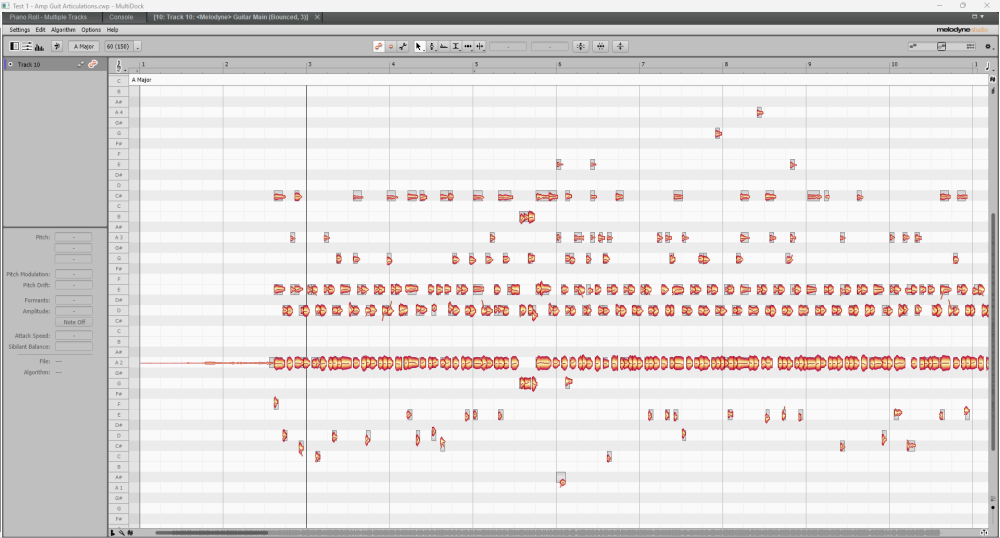Hi, Experimenting with melodyne to take audio instruments (a Rythym Guitar in this instance) into midi to transpose into other digital instruments.
I am passing it through the melodyne note editor to "see" the note information prior to the midi extraction.
I am greatly confused by what Melodyne presents as the note and key information. If you look at the attached screen shot it shows the key as A Major with the primary notes in this rhythm guitar as A2 D and E.
The guitarist tells me he is playing G Gm11 with an occasional B
Know I understand D and E are in the chord G but not A and where is the "dominant" G.
My music knowledge doesn't extend into knowing what key is prescribed from the chords being played, But I don't think G & Gm11 are A Major.
I know Melodyne has different alogrithms, this time it used polyphonic, but would different algorithms arrive at incorrect notes?
Any hints to improve my understanding greatly received. Thanks
P.S. Listening to a new digital guitar playing alongside the Audio guitar - sounds ok not discordant. Some issues where audio guitar slides but I understand that and can adapt. I am just not understanding the difference between what the guitar player is telling and and what Melodyne is telling me....
Question
Roy Slough
Hi, Experimenting with melodyne to take audio instruments (a Rythym Guitar in this instance) into midi to transpose into other digital instruments.
I am passing it through the melodyne note editor to "see" the note information prior to the midi extraction.
I am greatly confused by what Melodyne presents as the note and key information. If you look at the attached screen shot it shows the key as A Major with the primary notes in this rhythm guitar as A2 D and E.
The guitarist tells me he is playing G Gm11 with an occasional B
Know I understand D and E are in the chord G but not A and where is the "dominant" G.
My music knowledge doesn't extend into knowing what key is prescribed from the chords being played, But I don't think G & Gm11 are A Major.
I know Melodyne has different alogrithms, this time it used polyphonic, but would different algorithms arrive at incorrect notes?
Any hints to improve my understanding greatly received. Thanks
P.S. Listening to a new digital guitar playing alongside the Audio guitar - sounds ok not discordant. Some issues where audio guitar slides but I understand that and can adapt. I am just not understanding the difference between what the guitar player is telling and and what Melodyne is telling me....

Edited by Roy SloughMore info
5 answers to this question
Recommended Posts
Please sign in to comment
You will be able to leave a comment after signing in
Sign In Now